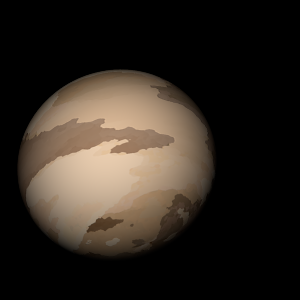|
|
Space Astro
|
Info for exoplanet "Encyue'cyuns"
| Scientific (actual) data |
|---|
| Name | TOI-2076 d |
| Planet status | Confirmed |
| Planet mass | 0.023 |
| Radius | 0.2935 |
| Orbital period | 35.1255 |
| Semi major axis | 0.1988 |
| Inclination | 88.607 |
| Discovered | 2021 |
| Updated | 2024-08-21 |
| Tconj | 8938.3 |
| Tzero tr | 2458840 |
| Impact parameter | 0.78 |
| K | 1.6 |
| Temperature (kelvin) | 648 |
| Publication | Published in a refereed paper |
| Detection type | Primary Transit |
| Mass measurement type | Theoretical |
| Radius measurement type | Primary Transit |
| Alternate names | BD+40 2790 d, TOI-2076.02 |
| Star name | TOI-2076 |
| Right ascension | 217.39° |
| Declination | 39.79° |
| Mag v | 10 |
| Star distance | 41.906 |
| Star metallicity | -0.03 |
| Star mass | 0.849 |
| Star radius | 0.758 |
| Star sp type | G9/K0V |
| Star age | 0.21 |
| Star temperature | 5200 |
| Star alternate names | BD+40 2790 |
| Wikipedia article | TOI-2076 d |
Back
| |
| Fictional info (?) |
|---|
| Suggested name | Encyue'cyuns |
| Planet type | Small cold gas planet |
| When viewed from Earth, this proximity to TOI-2076 means the planet can only be seen near the western or eastern horizon during the early evening or early morning.
Having almost no atmosphere to retain heat, it has surface temperatures that vary diurnally more than on any other planet in its solar system, ranging from 50°K (-223°C) at night to 385°K (112°C) during the day across the equatorial regions.
Its north and south poles, therefore, lie where most other planets have their equators. |
| Atmosphere | Nitric oxide | 99% |
| Atmospheric pressure | 15 bar |
 |
| No known satellites |
| Google search for Encyue'cyuns |
|
Website by Joachim Michaelis
|
|
|
|